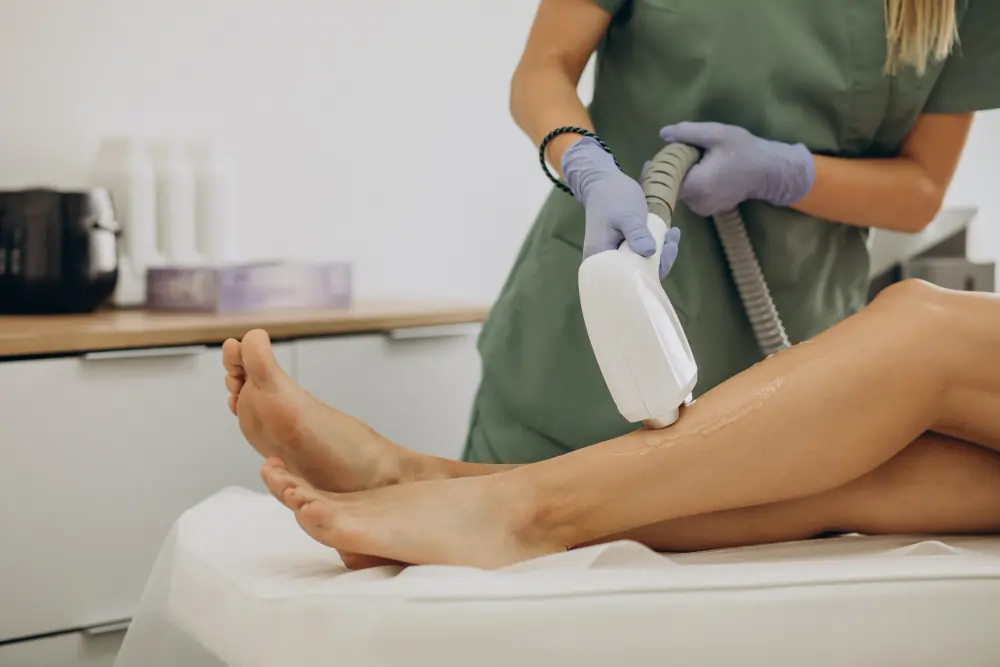
Introduction
Embark on a journey through the fascinating world of hair removal with our deep dive into The Science Behind Waxing. This isn’t just about beauty; it’s about understanding the intricate details that make waxing an art and a science. From the roots of hair growth to the smooth finish that leaves your skin glowing, we uncover the secrets that have been sticking around for centuries. Whether you’re a waxing novice or a seasoned pro, this article will shed light on the essential knowledge you need before your next strip is pulled. Get ready to smooth out the facts and strip away the myths with every flick of the waxing stick!
This introduction aims to engage the reader with a mix of informative content and playful language, setting the tone for an article that’s both educational and enjoyable to read. It’s designed to pique curiosity and encourage readers to continue exploring the topic. Remember to maintain this balance throughout your article to keep your readers interested and informed.
The History of Waxing
The Origins and Evolution of Waxing
Waxing, a practice that spans millennia, has its roots in ancient civilizations. The Egyptians, Greeks, and Romans employed natural resins mixed with oils and honey to create a sticky substance for hair removal. This rudimentary form of waxing was the precursor to more sophisticated methods that would emerge over time.
As waxing practices evolved, the Middle East played a pivotal role, particularly with the advent of sugaring, a technique using a paste made from sugar, lemon juice, and water. This method was embraced as part of the beauty regimen by Middle Eastern women and is still popular today.
In Europe, during the Renaissance, waxing became a symbol of nobility and beauty. Queen Elizabeth I’s iconic appearance, believed to be achieved through waxing, influenced European women to adopt similar practices.
The 20th century saw waxing’s popularity soar in the United States and Europe, with the introduction of modern techniques like soft wax and muslin strips, making the process more efficient and less painful. The 1980s marked a significant innovation with the introduction of hard wax, which adhered primarily to the hair and not the skin, reducing irritation and making it ideal for sensitive areas.
Cultural Influences on Waxing Practices
Cultural influences have significantly shaped waxing practices throughout history. In ancient Egypt, waxing was part of an elaborate beauty ritual, while in ancient Greece, athletes used waxing to enhance performance and prevent excessive sweating.
The Middle Ages saw waxing as a luxury reserved for European nobility, but it gradually became more accessible to the wider population. The Brazilian wax, which involves the removal of all hair in the bikini area, gained popularity in the early 1990s, reflecting changing beauty standards and cultural trends.
Today, waxing is a global phenomenon, with various techniques catering to diverse cultural preferences and beauty standards. Its history reflects not only the pursuit of beauty but also the technological advancements and cultural shifts that have influenced its practice.
Aftercare Essentials: Prolonging the Smoothness
Post-Waxing Skincare Tips
- Soothe the Skin: After waxing, calm the skin with aloe vera or a cooling gel to reduce inflammation and redness.
- Moisturize: Hydrate the skin with a fragrance-free moisturizer to restore its natural barrier.
- Wear Loose Clothing: Allow your skin to breathe by wearing loose, comfortable clothing that doesn’t rub against the waxed areas.
- Avoid Heat: For the next 24-48 hours, steer clear of hot showers, saunas, and direct sunlight to prevent irritation.
How to avoid and treat common side effects like ingrown hairs
- Exfoliate Regularly: A couple of days post-waxing, gently exfoliate the skin to prevent dead skin cells from clogging pores and causing ingrown hairs.
- Use Ingrown Hair Solutions: Products containing salicylic acid or glycolic acid can help prevent and treat ingrown hairs by keeping the follicles clear.
- Don’t Pick or Tweeze: Resist the urge to pick or tweeze ingrown hairs, as this can lead to infection and scarring.
- Consult a Professional: If ingrown hairs become a persistent issue, seek advice from a dermatologist or skincare professional for specialized treatments.
The Long-Term View: Effects of Regular Waxing on Hair Growth
Investigating Claims of Reduced Hair Growth with Consistent Waxing
Regular waxing is believed to affect hair growth over time. The process involves pulling hair out from the roots, which could potentially weaken the hair follicles. This weakening may result in hair growing back finer and less dense. However, it’s important to note that waxing does not stop hair growth permanently. The extent of hair growth reduction can vary based on individual factors such as hair texture, hormonal levels, and frequency of waxing.
Expert Opinions and Scientific Evidence
Dermatologists and estheticians generally agree that consistent waxing does not cause hair to grow back thicker. Instead, it may lead to finer and sparser hair regrowth due to the repeated trauma to the hair follicles. Scientific studies have also observed that while waxing can damage hair follicles, leading to thinner hair, the reduction in hair growth is not likely to be permanent. Moreover, there is no conclusive evidence that waxing can completely stop hair growth.
In short, while regular waxing may lead to a reduction in hair growth and changes in hair texture, the effects are not permanent and can vary widely among individuals. For those considering waxing as a hair removal method, it’s recommended to consult with a dermatologist or a professional esthetician to understand how it might affect their specific hair growth patterns.
Conclusion
Waxing is a popular hair removal method that works by pulling hair out from the roots. While it can be slightly painful, it provides smoother skin for longer periods compared to shaving. Understanding the science behind waxing can help you achieve better results and minimize discomfort.
FAQs
Q: How long does waxing last?
A: Typically, waxing can last between 3 to 6 weeks, depending on your hair growth cycle.
Q: Is waxing safe for all skin types?
A: Yes, but it’s important to use the right type of wax and follow proper techniques, especially if you have sensitive skin.
Q: Can waxing reduce hair growth over time?
A: Regular waxing can lead to finer and sparser hair growth, as it weakens the hair follicles.
Q: What should I do before a waxing session?
A: Exfoliate the area to be waxed and ensure your hair is about 1/4 inch long for optimal results.
Q: Are there any aftercare tips post-waxing?
A: Avoid sun exposure, hot showers, and tight clothing for at least 24 hours to prevent irritation.




 Afrikaans
Afrikaans Albanian
Albanian Amharic
Amharic Arabic
Arabic Armenian
Armenian Azerbaijani
Azerbaijani Basque
Basque Belarusian
Belarusian Bengali
Bengali Bosnian
Bosnian Bulgarian
Bulgarian Catalan
Catalan Cebuano
Cebuano Chichewa
Chichewa Chinese (Simplified)
Chinese (Simplified) Chinese (Traditional)
Chinese (Traditional) Corsican
Corsican Croatian
Croatian Czech
Czech Danish
Danish Dutch
Dutch English
English Esperanto
Esperanto Estonian
Estonian Filipino
Filipino Finnish
Finnish French
French Frisian
Frisian Galician
Galician Georgian
Georgian German
German Greek
Greek Gujarati
Gujarati Haitian Creole
Haitian Creole Hausa
Hausa Hawaiian
Hawaiian Hebrew
Hebrew Hindi
Hindi Hmong
Hmong Hungarian
Hungarian Icelandic
Icelandic Igbo
Igbo Indonesian
Indonesian Irish
Irish Italian
Italian Japanese
Japanese Javanese
Javanese Kannada
Kannada Kazakh
Kazakh Khmer
Khmer Korean
Korean Kurdish (Kurmanji)
Kurdish (Kurmanji) Kyrgyz
Kyrgyz Lao
Lao Latin
Latin Latvian
Latvian Lithuanian
Lithuanian Luxembourgish
Luxembourgish Macedonian
Macedonian Malagasy
Malagasy Malay
Malay Malayalam
Malayalam Maltese
Maltese Maori
Maori Marathi
Marathi Mongolian
Mongolian Myanmar (Burmese)
Myanmar (Burmese) Nepali
Nepali Norwegian
Norwegian Pashto
Pashto Persian
Persian Polish
Polish Portuguese
Portuguese Punjabi
Punjabi Romanian
Romanian Russian
Russian Samoan
Samoan Scottish Gaelic
Scottish Gaelic Serbian
Serbian Sesotho
Sesotho Shona
Shona Sindhi
Sindhi Sinhala
Sinhala Slovak
Slovak Slovenian
Slovenian Somali
Somali Spanish
Spanish Sundanese
Sundanese Swahili
Swahili Swedish
Swedish Tajik
Tajik Tamil
Tamil Telugu
Telugu Thai
Thai Turkish
Turkish Ukrainian
Ukrainian Urdu
Urdu Uzbek
Uzbek Vietnamese
Vietnamese Welsh
Welsh Xhosa
Xhosa Yiddish
Yiddish Yoruba
Yoruba Zulu
Zulu